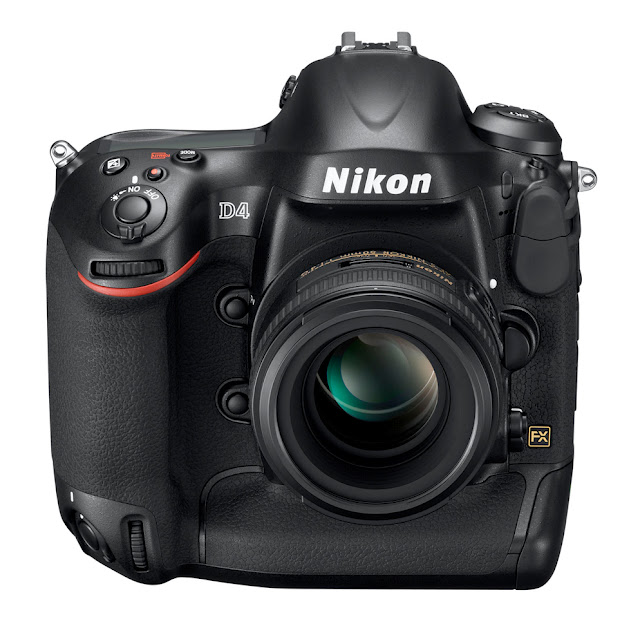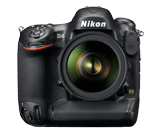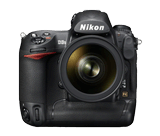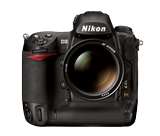If you like this post, help us share it
Nikon has finally announced its new flagship professional DSLR Nikon D4 (official announcement here). By now you would of found out what are the general specs on the new Nikon D4. If not check it out here.





If you are already convinced to get the Nikon D4, you can pre-order yours here with B&H. On paper, here is a spec comparison between the Nikon D4 vs the D3s:
| Nikon D4 | Nikon D3s | |
| Megapixels | 16.2 megapixels | 12.1 megapixels |
| Native ISO Range | 100 – 12,800 | 200 – 12,800 |
| Expanded ISO Range | 50 – 204,800 | 100 – 102,400 |
| Focus Points | 51 focus points (15 cross-sensors at f/5.6, 5 cross-sensors at f/8) | 51 focus points (15 cross-sensors) |
| Metering | 91,000 pixel RGB sensor | 1,005 pixel RGB sensor |
| Memory Slot | Dual Slot Compact Flash and XQD | Dual Slot Compact Flash |
| Frame Rate | 11 FPS | 9 FPS |
| Video | 1080p(24/25/30) | 720p(24) |
| LCD | 3.2”, 921K dot | 3”, 921K dot |
These are all very nice specs on paper, but how are they related to the improvements made on the ergonomic design, processors, metering system and the brains behind the magnesium alloy body ?
The first aspect you will notice differently on the D4 is its ergonomic design. First, the red strip on the Nikon D4 has taken a transformation, it is now much slimmer and no longer has a triangular shape. Nikon loses the C/S/M switch and replaced with a simplified AF/M switch instead.
The hot shoe/eye piece “hump” has a better contour shape (more blended in) similar to the Canon design. On the D3s, the “ hump” feels like something sticking out, but now it is much more contoured.

Most ergonomic changes are located at the back. Nikon finally has added a dedicated zoom out button which solved what I hated most on the D3s, I had to hold the zoom button and use the dial to zoom out. The AE-L/AF-L button is now replaced by a mini multi selector for quick selection of AF points, as well as video and mic buttons are added to the back panel. A noticeable change to the button layout is the second set of AF-ON and mini multi selector for shooting in portrait orientation (see image below from engadget). The vertical hold is also now more secure with a newly added thumb grip and an extended grip area for the fingers.


The Metering mode selector used to be on the right hand side of the eye piece is now located as one of the three top left side buttons. Located next to the shutter-release button, there is a dedicated recording start button
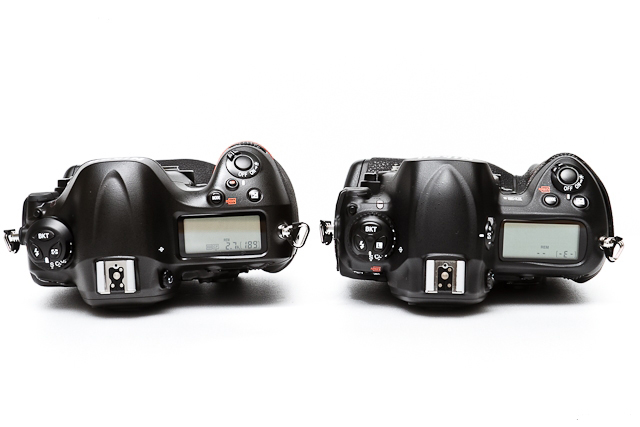
The shutter button is also placed at a more convenient angle so your finger is in a more relax position. The metering switch has been removed as mentioned above.

The Nikon D4 is packed with a lot of interfaces – gigabit LAN port, earphone and mic inputs, HDMI port, USB port and WT-5 port. With the use of LAN port, you can now use studio monitors and computers to control your shooting. The HDMI port allows the D4 to be connected to a larger LCD for viewing instead of using the 3.2” LCD. WT-5 wireless transmitter has made a significant change, it has deviated from using USB interface and its size has been made much smaller, so expect much simpler and faster operations.

Nikon D4 with WT-5 attached


Nikon D4 is equipped with a newly designed 16.2 MP CMOS FX format image sensor. Each pixel is as large as 7.3 µm, and is engineered to collect the maximum amount of light and render the highest possible image quality in both bright and dark conditions. The D4 allows user to shoot with four image area options: FX format (36.0 x 23.9 mm), 5:4 crop (29.9 x 23.9 mm), 1.2x crop (29.9 x 19.9 mm) and DX format (23.4 x 15.5 mm).

The EXPEED 3 Processor first introduced in Nikon 1 system is also adopted in the Nikon D4. I am sure it will also be adopted in the Nikon D800. The EXPEED 3 is responsible for delivering outstanding system performance, high-speed processing, fast phase detection autofocus and the fastest data transfer rates.
Even when shooting in dim lighting at high ISO sensitivities, the camera’s noise reduction lowers noise without degrading image sharpness. Its massive, high-speed 16-bit image processing delivers smooth gradation and retain tone and detail.
The D4 provides low-noise performance at ISO 12800 and extends the range one EV further, compared with that of the D3S, making ISO 100 standard
EXPEED 3 has been optimized for video as well, rendering movie with reduced moiré, false colours and "jaggies."

Advance Scene recognition system with 91K pixel RGB sensor is the new standard in the D4 compares to the traditional 1,005 pixel RGB sensor used in the D3s.
This advance 91K pixel RGB sensor allows accurate autofocus, auto exposure, i-TTL flash, Active D-Lighting and auto white balance result. Improve face detection is also made possible when shooting with the optical viewfinder even at up to 10 FPS.
The advance face detection in D4 will automatically recognize human faces and in the case where contrast lighting situation occurs, better auto exposure and enhanced i-TTL balanced fill flash are achieved.

The Nikon D4 retains 51 AF points, but with AF detection as low as –2 EV which is approximately the physical limit of human visibility through an optical viewfinder. This simply says, the D4 will be able to AF at the darkest place possible.
Refer to diagrams below:
(1) All 51 AF points of the D4 are usable with every AF NIKKOR lens of f/5.6 or faster. Of the 51 AF points, 15 are cross typed sensors in the central viewfinder area.
(2) Nine central cross type focus points and three points to the left and right of them in the middle line are compatible with aperture slower than f/5.6 and faster than f/8
(3) Five central focus points (1 cross typed sensor) and three points to the left and right of them in the middle line are compatible with f/8.



(1) Compatible with f/5.6 (2) Compatible with f/5.6 -f/8 (3) Compatible with f/8

The D4 can record 1080p Full HD video at 30/25 or 24p in H.264/MPEG-4 AVC format. Maximum recording time for a single clip is 29 min. 59 s. This is due to a limitation set to differentiate between cameras and video camcorders. This is much more superior to the D3s which only offers up to 720p/24 recording.
With the D4, there are three Full HD video modes: FX-based, DX-based or 1,920 x 1,080 crop movie format. The 1920 x 1090 crop mode effectively is a 2.7x crop of the picture angle for an even stronger telephoto effect while maintain full 1080p HD standard.

The D4 is equipped with two card slots, one for a CF card compatible with UDMA 7 and another for the XQD memory card. The XQD memory media is capable of capturing up to approximately 100 frames in RAW format in continuous shooting mode. This is an outstanding speed.
The newly announced Sony XQD memory card is said to achieve stable continuous shooting of RAW images and blazing fast data transfer rates of up to 1Gbps/125MB/s write and read (based on Sony tests and dependent on host hardware) through the PCIe interface, a computer expansion card standard for serial interfaces.
As a user thou, that means we have to carry both CFs and XQDs cards in our bag if you want take advantage of the dual slots.

Nikon D4 uses a new type of Lithium-ion battery EN-EL18 (10.8V 2000 mAh) which has a battery life of 2,600 shots per charge. which surprisingly is lower than the EN-EL4 (11.0 V 2500 mAh) used in D3s (4,200 shots per charge).
Updates: Nikon explains the D4 battery EN-EL18 does perform better than the D3s battery EN-EL4a. Read more here

When shooting in the dark, buttons are illuminated to ensure better visibility of the operational system in dark situations.
Check out some hands on images of the Nikon D4.


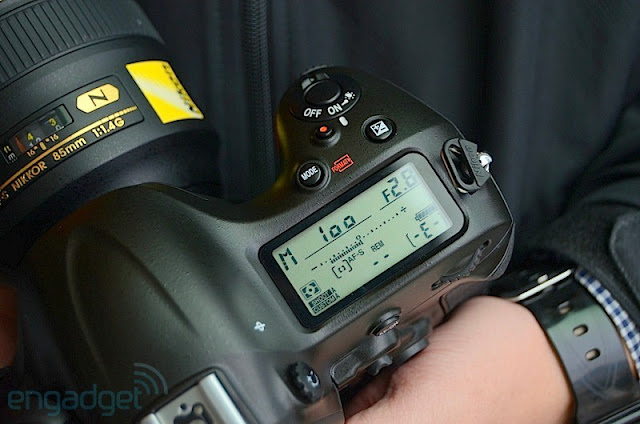

above images sourced from nikonusa.com, mobile01.com and engadget.com
If you are already convinced to get the Nikon D4, you can pre-order yours here with B&H
Nikon D4 vs D3s vs D3 Specification Comparison
|
|
|
|
|
|
Lens Mount |
Nikon F bayonet mount |
Nikon F bayonet mount |
Nikon F bayonet mount |
|
Effective Pixels |
16.2 million |
12.1 million |
12.1 million |
|
Sensor Size |
36.0 x 23.9mm |
36.0 x 23.9mm |
36.0 x 23.9mm |
|
Image Sensor Format |
FX |
FX |
FX |
|
File Format Still Images |
JPEG: JPEG-Baseline Compliant; can be selected from Size Priority and Optimal Quality |
Compressed 12/14-bit NEF (RAW, Compressed): approx. 45-60 percent |
Compressed 12/14-bit NEF (RAW, Compressed): approx. 45-60 percent |
|
Picture Control |
Landscape |
Monochrome |
Monochrome |
|
Storage Media |
CompactFlash© (CF) (Type I, compliant with UDMA) |
CompactFlash© (CF) (Type I, compliant with UDMA) |
CompactFlash© (CF) (Type I/II, compliant with UDMA) |
|
Card Slot |
1 CompactFlash© (CF) card and 1 XQD memory type card |
2 CompactFlash© (CF) cards |
2 CompactFlash© (CF) cards |
|
Viewfinder Frame Coverage |
FX (36×24): 100% Horizontal and 100% Vertical Approx. |
100 % Approx. |
100 % Approx. |
|
Viewfinder Magnification |
0.70x Approx. |
0.70x Approx. |
0.70x Approx. |
|
Interchangeable Focusing Screens |
— |
Type B BriteView Clear Matte VI |
Type B BriteView Clear Matte VI |
|
Lens Compatibility at a Glance*** |
AF-S or AF lenses fully compatible |
AF-S or AF lenses fully compatible |
AF-S or AF lenses fully compatible |
|
Fastest Shutter Speed |
1/8000 sec. |
1/8000 sec. |
1/8000 sec. |
|
Slowest Shutter Speed |
30 sec. |
30 sec. |
30 sec. |
|
Top Continuous Shooting Speed at full resolution |
10 frames per second |
9 frames per second |
9 frames per second |
|
Exposure Compensation |
±5 EV in increments of 1/3, 1/2 or 1 EV |
±5 EV in increments of 1/3, 1/2 or 1 EV |
±5 EV in increments of 1/3, 1/2 or 1 EV |
|
Mirror Lock Up |
Yes |
Yes |
Yes |
|
ISO Sensitivity |
ISO 100 – 12,800 |
ISO 200 – 12,800 |
ISO 200 – 6400 |
|
Dynamic AF Mode |
Number of AF points: 9, 21, 51 and 51 (3D-tracking) |
Number of AF points: 9, 21, 51 and 51 (3D-tracking) |
Number of AF points: 9, 21, 51 and 51 (3D-tracking) |
|
Auto-area AF Mode |
Yes |
Yes |
Yes |
|
Focus Modes |
Auto AF-S/AF-C selection (AF-A) |
Continuous-servo (C) |
Continuous-servo (C) |
|
Maximum Autofocus Areas/Points |
51 |
51 |
51 |
|
Flash Bracketing |
2 to 9 frames in steps of 1/3, 1/2, 2/3 or 1 EV |
2 to 9 frames in steps of 1/3, 1/2, 2/3 or 1 EV |
2 to 9 frames in steps of 1/3, 1/2, 2/3 or 1 EV |
|
Top FP High Speed Sync |
Up to 1/8000 |
Up to 1/8000 |
Up to 1/8000 |
|
Flash Sync Modes |
Auto FP High-Speed Sync supported |
Front-curtain sync (normal) |
Front-curtain sync (normal) |
|
Flash Compensation |
-3 to +1 EV in increments of 1/3, 1/2 or 1 EV |
— |
— |
|
White Balance |
Auto (2 types) |
Auto (2 types) |
Auto (2 types) |
|
Live View Shooting |
Photography Live View Mode |
Handheld mode |
Handheld mode |
|
Movie |
HD 1,920×1,080 / 30 fps |
VGA 640×424 / 24 fps |
— |
|
Movie Audio |
Built-in microphone, monaural |
Built-in microphone, monaural |
— |
|
Monitor Size |
3.2 in. diagonal |
3.0 in. diagonal |
3.0 in. diagonal |
|
Monitor Type |
Wide Viewing Angle TFT-LCD |
Super Density |
Super Density |
|
GPS |
GP-1 GPS unit |
GP-1 GPS unit |
— |
|
Battery / Batteries |
EN-EL18 Lithium-ion Battery |
EN-EL4 Lithium-ion Battery |
EN-EL4 Lithium-ion Battery |
|
Battery Life (shots per charge) |
2,600 Battery Life (shots per charge) (CIPA) |
4,200 shots (CIPA) |
4,300 shots (CIPA) |
|
AC Adapter |
EH-6b AC Adapter |
EH-6 AC Adapter |
EH-6 AC Adapter |
|
Approx. Dimensions |
Width 6.3 in. (160mm) |
Width 6.3 in. (159.5mm) |
Width 6.3 in. (159.5mm) |
|
Approx. Weight |
41.6 oz. (1180g) camera body only |
43.7 oz. (1,240g) camera body only |
43.7 oz. (1,240g) camera body only |
Where can I find the equipment seen on this site?
If you find this site useful and planning to purchase any of the equipment seen on this site, please show your support by purchasing your photo equipment at B&H Photo Video, or through any of the affiliate links seen on this site.


